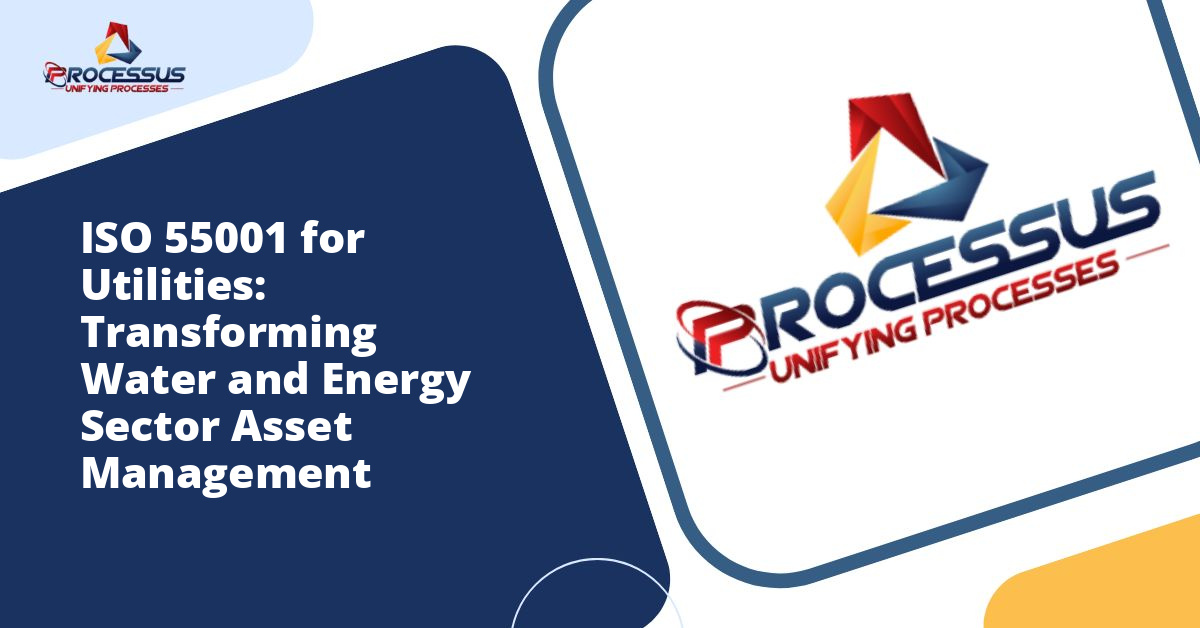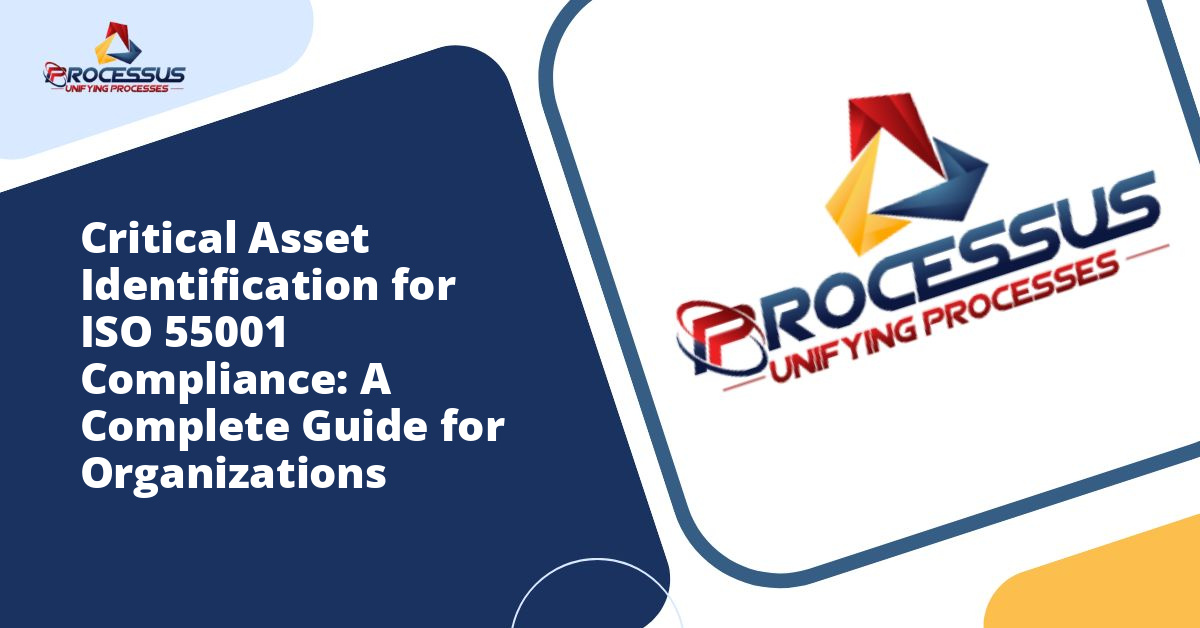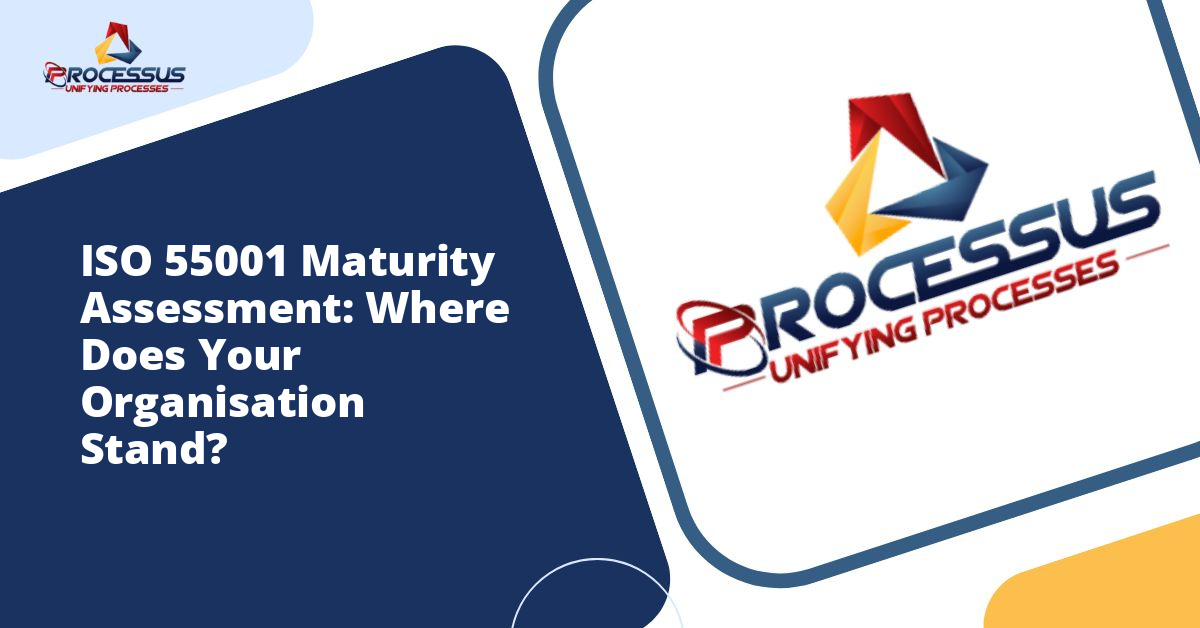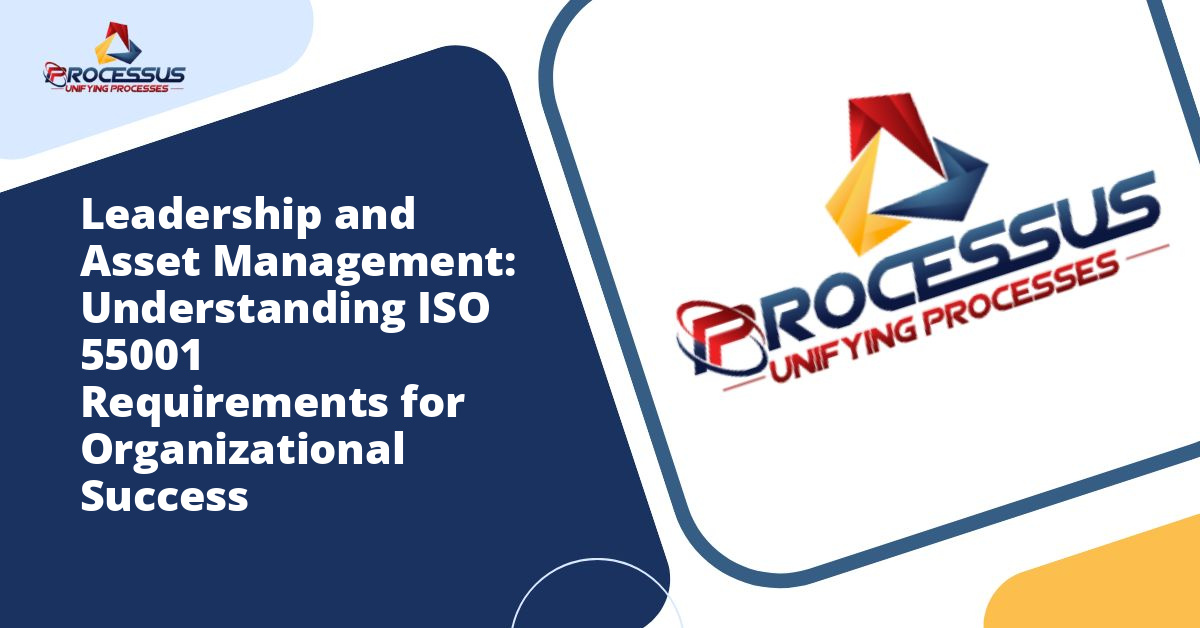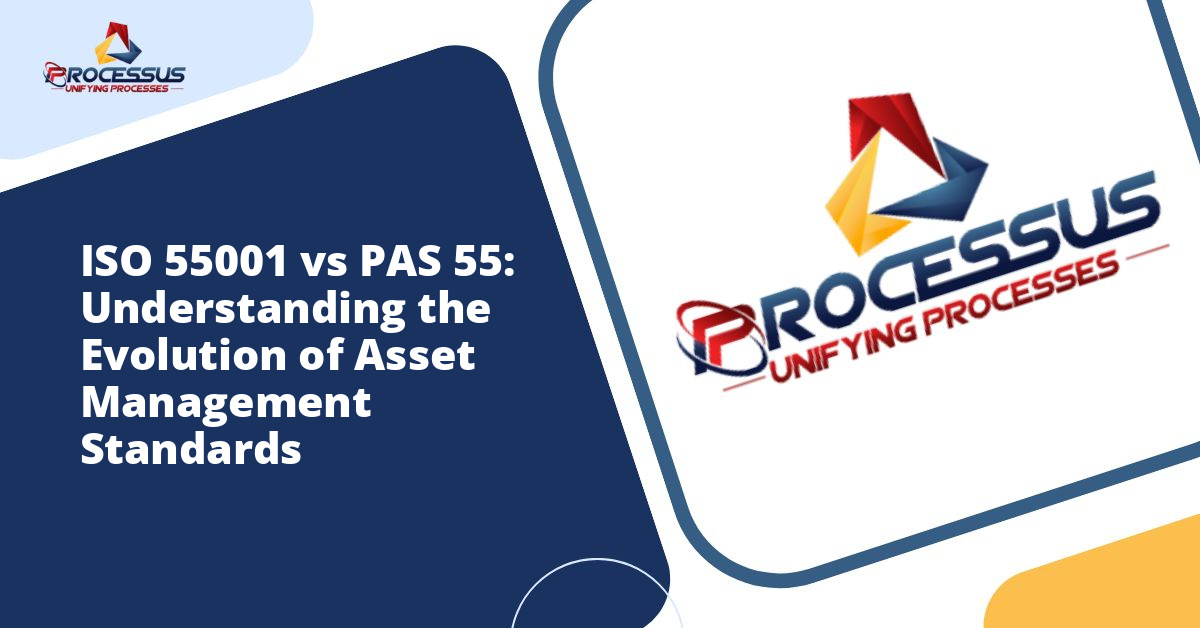The utility sector stands at a critical juncture where aging infrastructure, increasing regulatory demands, and the need for sustainable operations converge. For water and energy providers, managing physical assets effectively is not just a business imperative but a public responsibility. ISO 55001, the international standard for asset management, offers a structured framework that helps utilities optimize their asset performance while meeting stakeholder expectations and regulatory requirements.
This comprehensive guide explores how ISO 55001 applies specifically to the water and energy sectors, examining practical applications, implementation strategies, and the tangible benefits utilities can achieve through systematic asset management practices. You might also enjoy reading about Maximising Asset Lifecycle Value with ISO 55001: A Comprehensive Guide to Strategic Asset Management.
Understanding ISO 55001 in the Utility Context
ISO 55001 provides a holistic approach to managing assets throughout their lifecycle. For utilities, which operate capital-intensive infrastructure networks that serve millions of customers, this standard offers particular value. The framework helps organizations align asset management activities with strategic objectives while ensuring safety, reliability, and efficiency.
The standard applies to all types of assets, including physical infrastructure like pipelines, treatment facilities, power generation equipment, transmission lines, and distribution networks. Beyond physical assets, it also encompasses information systems, workforce capabilities, and even intangible assets such as regulatory licenses and customer relationships.
Core Principles Relevant to Utilities
Several fundamental principles of ISO 55001 resonate particularly well with utility sector needs. Value realization ensures that asset management decisions support organizational objectives and deliver benefits to stakeholders. For a water utility, this might mean balancing service reliability with affordable rates. For energy providers, it could involve optimizing generation capacity while transitioning to cleaner energy sources.
Alignment represents another crucial principle. Asset management strategies must align with organizational goals, regulatory mandates, and community expectations. Utilities face unique alignment challenges because they must satisfy diverse stakeholders including regulators, investors, customers, and the communities they serve.
Leadership and commitment drive successful implementation. Senior management must champion asset management initiatives and ensure adequate resources are available. In the utility sector, where infrastructure investments span decades, long-term leadership commitment becomes especially important.
Asset Management Challenges in Water Utilities
Water utilities face distinctive asset management challenges that make ISO 55001 implementation both necessary and complex. Much of the water infrastructure in developed nations was installed in the mid-twentieth century and now approaches or exceeds its design life. Aging pipes, treatment plants, and pumping stations require increasingly frequent maintenance and eventual replacement.
Infrastructure Degradation and Risk
Deteriorating water infrastructure presents multiple risks. Pipe failures can interrupt service, contaminate drinking water, and damage property. Treatment facilities operating beyond their intended lifespan may struggle to meet modern water quality standards. Pumping stations with outdated equipment consume excessive energy and break down more frequently.
ISO 55001 helps water utilities systematically assess infrastructure condition, predict failure likelihood, and prioritize interventions based on risk and consequence. Rather than reactive maintenance or arbitrary replacement schedules, utilities can develop evidence-based strategies that optimize spending while protecting public health and safety.
Regulatory Compliance and Water Quality
Water utilities operate under strict regulatory frameworks governing water quality, environmental protection, and service reliability. Asset management decisions directly impact compliance capability. A failing treatment process, contaminated storage tank, or compromised distribution system can quickly lead to regulatory violations with serious consequences.
The ISO 55001 framework helps utilities maintain compliance by ensuring critical assets receive appropriate attention. By linking asset performance to compliance requirements, utilities can demonstrate to regulators that they manage infrastructure proactively rather than waiting for problems to emerge.
Financial Sustainability
Many water utilities face a challenging financial reality. Rate structures often fail to generate sufficient revenue for necessary infrastructure renewal. Political pressure keeps rates low while infrastructure needs grow. This creates a sustainability gap that threatens long-term service viability.
ISO 55001 provides tools for demonstrating infrastructure investment needs with data and analysis. When utilities can show regulators and customers the connection between rates, infrastructure condition, and service reliability, they build stronger cases for necessary rate adjustments. The standard also helps identify efficiency opportunities that can offset some infrastructure costs.
Asset Management Applications in the Energy Sector
Energy utilities, including electric power generators, transmission operators, and distribution companies, face their own set of asset management challenges. The energy sector is experiencing unprecedented transformation as it shifts toward cleaner generation sources, integrates distributed energy resources, and modernizes grid infrastructure.
Generation Asset Optimization
Power generation assets represent enormous capital investments with complex operational requirements. Whether managing coal plants, natural gas facilities, nuclear reactors, or renewable energy installations, generation companies must optimize asset performance to remain competitive while meeting environmental standards.
ISO 55001 helps generation operators balance multiple objectives. Maximizing availability and efficiency generates revenue and keeps electricity affordable. Maintaining safety and environmental compliance protects workers, communities, and the license to operate. Planning for eventual decommissioning or repurposing ensures smooth transitions as the generation mix evolves.
For renewable energy operators, asset management takes on additional dimensions. Solar panels degrade over time, wind turbines face mechanical stress, and battery storage systems have limited cycle lives. ISO 55001 provides frameworks for monitoring performance, predicting maintenance needs, and optimizing the contribution of renewable assets to the overall generation portfolio.
Transmission and Distribution Networks
Electric transmission and distribution systems form vast networks of towers, poles, lines, transformers, and substations. These assets operate in diverse environments, face weather-related stresses, and must maintain high reliability to support modern society’s electricity dependence.
Grid modernization initiatives add complexity to asset management. Utilities are installing smart meters, automated switches, voltage regulators, and communication systems. Managing both legacy and modern assets within an integrated network requires sophisticated approaches that ISO 55001 facilitates.
The standard helps transmission and distribution operators implement condition-based maintenance strategies. Rather than time-based inspections and replacements, utilities can use sensor data, thermal imaging, and predictive analytics to identify assets requiring attention. This approach reduces costs while improving reliability.
Integration of Distributed Energy Resources
The proliferation of rooftop solar, battery storage, electric vehicles, and other distributed energy resources fundamentally changes utility asset management. The grid becomes bidirectional, with electricity flowing both from centralized generators to customers and from customer-sited resources back to the grid.
ISO 55001 principles help utilities manage this complexity by treating the entire ecosystem as interconnected assets. Distribution transformers, voltage regulation equipment, and control systems must adapt to variable and sometimes unpredictable power flows. Asset management strategies must account for these new operational realities.
Implementing ISO 55001 in Utility Organizations
Successfully implementing ISO 55001 requires commitment, planning, and systematic execution. Utilities should approach implementation as a journey rather than a destination, with continuous improvement built into the process.
Leadership and Strategic Alignment
Implementation begins with leadership commitment and strategic planning. Senior executives must understand the value proposition and dedicate necessary resources. The organization should develop an asset management policy that articulates principles, objectives, and commitments.
Strategic asset management plans translate organizational strategy into asset-specific objectives and activities. For a water utility, the strategic plan might prioritize reducing water loss, improving treatment efficiency, and replacing critical infrastructure. An energy utility might focus on improving grid reliability, integrating renewables, and managing the transition away from fossil fuels.
Gap Analysis and Planning
Most utilities already perform asset management activities, though perhaps not systematically or consistently. A gap analysis compares current practices against ISO 55001 requirements, identifying areas needing development. This assessment provides the foundation for implementation planning.
Common gaps include incomplete asset registers, inadequate performance monitoring, insufficient risk assessment, and poor integration between departments. The implementation plan addresses these gaps systematically, establishing priorities, timelines, responsibilities, and resource requirements.
Building Capability and Culture
ISO 55001 implementation requires developing organizational capabilities. Staff need training in asset management principles, tools, and techniques. Data management systems must capture and organize asset information. Analytical capabilities should support decision making.
Culture change often presents the biggest implementation challenge. Asset management requires breaking down silos between operations, maintenance, engineering, and finance departments. It demands long-term thinking in organizations often focused on short-term pressures. Leadership must actively cultivate a culture that values evidence-based decision making, lifecycle thinking, and continuous improvement.
Developing Asset Information Systems
Effective asset management depends on quality information. Utilities need comprehensive asset registers documenting what assets exist, where they are located, their specifications, condition, and performance history. This seems straightforward but proves challenging for organizations with legacy infrastructure and incomplete records.
Modern asset information systems integrate data from multiple sources including work order systems, supervisory control and data acquisition platforms, geographic information systems, and financial systems. This integration provides holistic views of asset performance, costs, and risks that support better decisions.
Measuring Performance and Driving Improvement
ISO 55001 emphasizes performance measurement and continuous improvement. Utilities must establish key performance indicators that track asset management effectiveness and efficiency.
Leading and Lagging Indicators
Effective measurement systems include both leading and lagging indicators. Lagging indicators measure outcomes such as asset failures, service interruptions, maintenance costs, and regulatory compliance. These metrics show results but offer limited ability to predict or prevent problems.
Leading indicators provide early warning of developing issues. For water utilities, these might include pipe break rates by age and material, treatment process performance trends, or percentage of assets with current condition assessments. Energy utilities might track equipment health indices, vegetation management completion rates, or grid automation deployment progress.
Benchmarking and Comparison
Utilities benefit from comparing their performance against peers. Industry associations and regulatory bodies often compile benchmarking data on metrics like asset utilization, maintenance costs, service reliability, and customer satisfaction. These comparisons help utilities identify improvement opportunities and demonstrate performance to stakeholders.
ISO 55001 implementation itself can be benchmarked. Maturity assessments evaluate how well organizations apply asset management principles across different dimensions. Utilities can track maturity improvements over time and compare themselves against industry standards.
Benefits Realized by Utilities Implementing ISO 55001
Utilities that successfully implement ISO 55001 realize substantial benefits across multiple dimensions. These benefits justify the investment required for implementation and demonstrate value to stakeholders.
Improved Asset Performance and Reliability
Systematic asset management leads to better performing, more reliable infrastructure. By understanding asset condition, predicting failures, and intervening proactively, utilities reduce unplanned outages and extend asset life. Water utilities experience fewer main breaks and treatment disruptions. Energy providers improve grid reliability and generation availability.
Optimized Costs and Financial Performance
ISO 55001 helps utilities optimize lifecycle costs rather than minimizing short-term expenses. This approach often reveals that investing in preventive maintenance or strategic replacements costs less than running assets to failure. Better asset information supports more accurate budgeting and forecasting, reducing financial surprises.
Regulatory relationships often improve when utilities demonstrate sophisticated asset management practices. Regulators may approve needed rate increases more readily when utilities show they are managing infrastructure responsibly and efficiently.
Enhanced Risk Management
Utilities face numerous risks related to their physical assets including safety hazards, environmental incidents, service failures, and financial losses. ISO 55001 provides structured approaches to identifying, assessing, and mitigating these risks. Rather than managing risks reactively, utilities develop comprehensive risk profiles and implement appropriate controls.
Better Stakeholder Confidence
Transparent, systematic asset management builds stakeholder confidence. Customers trust that their utility manages infrastructure responsibly. Investors gain confidence in long-term viability. Regulators see evidence of prudent management. Communities trust that critical services will remain reliable.
Future Trends and Evolving Applications
Asset management in the utility sector continues evolving as technology advances and societal expectations change. Several trends will shape how utilities apply ISO 55001 in coming years.
Digital Transformation and Smart Infrastructure
Digital technologies are transforming utility asset management. Internet of things sensors provide real-time asset condition and performance data. Artificial intelligence and machine learning analyze patterns and predict failures. Digital twins create virtual replicas of physical infrastructure for simulation and optimization.
These technologies enhance ISO 55001 implementation by providing better information and analytical capabilities. However, they also create new asset management challenges around cybersecurity, data management, and technology obsolescence.
Climate Adaptation and Resilience
Climate change presents growing challenges for utility infrastructure. More frequent and severe weather events threaten water and energy systems. Rising temperatures affect equipment performance and energy demand patterns. Water scarcity stresses water supplies in some regions while flooding threatens infrastructure in others.
ISO 55001 frameworks must incorporate climate resilience considerations. Asset management strategies should account for changing environmental conditions, design standards should reflect future climate projections, and risk assessments should consider climate-related threats.
Sustainability and Circular Economy
Sustainability considerations increasingly influence utility asset management decisions. Beyond traditional financial and performance criteria, utilities must consider environmental impacts, resource efficiency, and circular economy principles. Asset management strategies should minimize carbon footprints, reduce waste, and extend material lifecycles through refurbishment and recycling.
Conclusion
ISO 55001 provides utilities in the water and energy sectors with powerful frameworks for managing their critical infrastructure assets. As these sectors face mounting challenges from aging infrastructure, evolving technology, climate change, and stakeholder expectations, systematic asset management becomes increasingly essential.
Implementation requires commitment, investment, and persistence. However, utilities that embrace ISO 55001 principles position themselves for long-term success. They deliver more reliable service, operate more efficiently, manage risks more effectively, and build stronger stakeholder relationships.
The journey toward asset management excellence is continuous. As conditions change and new challenges emerge, utilities must adapt their approaches while maintaining the disciplined, systematic practices that ISO 55001 promotes. Those that do will thrive in an increasingly complex and demanding operating environment, fulfilling their essential missions of providing safe, reliable water and energy services to the communities they serve.
Whether starting the ISO 55001 journey or advancing along the path toward certification, utilities should view asset management not as a compliance burden but as a strategic capability that creates lasting value. The framework offers more than a certificate on the wall; it provides practical tools and approaches that help utilities navigate uncertainty, optimize performance, and build sustainable futures.

